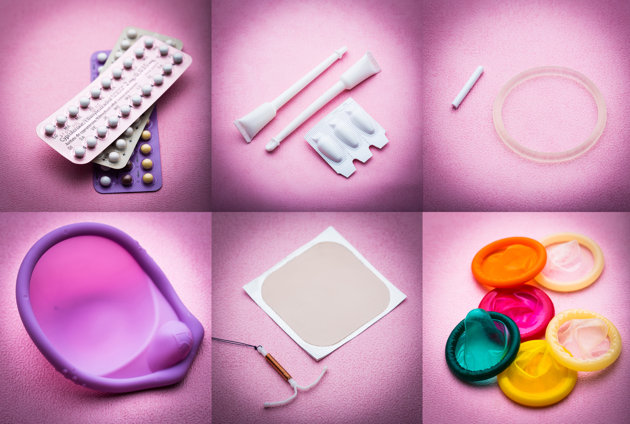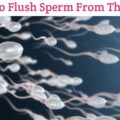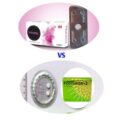Which of The Following Best Defines Contraceptive
- a device used to prevent pregnancy and disease
- a device used to prevent pregnancy
- a method or device used to prevent pregnancy
- a device used to prevent disease
The correct answer to the question above is C. Contraception is defined as the intentional prevention of conception through the use of various devices, sexual practices, chemicals, drugs, or surgical procedures. Thus, any device or act whose purpose is to prevent a woman from becoming pregnant can be considered as a contraceptive. In any social context effective contraception allows a couple to enjoy a physical relationship without fear of an unwanted pregnancy and ensures enough freedom to have children when desired.
Types of Contraceptive Methods
Traditional Methods
Coitus Interruptus or Withdrawal: Involves withdrawal of penis from the vagina just before ejaculation, thus preventing semen from entering the woman. This is perhaps the oldest contraceptive method known to man, but it depends on the cooperation of the male partner. This is not a reliable method and may fail if semen escapes before ejaculation or is left on external sex organs. Man needs good self-control, both emotionally and physically, for this method to succeed.
Lactational Amenorrhoea Method: Nursing women secrete hormones that prevent conception for about 6 months. It prevails if there is no menses and full breast-feeding day and night is maintained. This is more a myth as, breast-feeding is irregular, 60% women start menstruating by the third month. Not reliable in instances where baby sleeps through the night, or in case of sore, cracked or inverted nipples and breast abscess. Many unsuspecting women conceive during this period before return of menstruation.
Rhythm Method: This method requires predicting ovulation, the period when the woman is most fertile, by recording the menstrual pattern, or body temperature, or changes in cervical mucus, or a combination of these (symptom-thermal method). Intercourse is avoided on fertile days. Although a large number of people claim knowledge of this method, only a small proportion can actually identify the fertile period of the month. It cannot be used by women who have irregular periods, or after childbirth, or during menopausal years. Intercourse is limited to some days of the month only. The method requires careful record keeping for calculating the safe period.
Modern Methods
Male Condom: In this, a thin rubber or latex sheath (condom) is rolled on the erect penis before intercourse. It prevents semen (sperms) from entering the woman. The method is 95% effective if used correctly. It can be used by all age groups, safely. No prior medical examination is required and is easily available without prescription. It serves as the most effective method in providing twin protection of contraception and STI disease. The major drawback in this method is related to compliance, inconsistency and incorrect use. Total use by men in India varies from 2 to 14% in Punjab and 18% in Delhi. There are disadvantages intrinsic to this method, as it may tear or slip if not used properly. Expired or perforated condoms should not be used. Extra supply should be maintained in readiness whenever required.
Female Condom: This is a vaginal pouch made of latex sheath, with one ring at each end. The closed end ring is inserted inside the vagina and works as the internal anchor. Outer portion covers and protects the external genitalia. It is reliable, hypo-allergic with high acceptance in test groups although its cost could be a major deterrent to use. It is a female controlled method and protects from both unwanted pregnancy and STDs. Size and hardness of inner ring may be uncomfortable to some users. Extensive promotion and persuasion among female users is required to make it popular.
Oral Contraceptive Pills: The combined pill consists of two hormones: estrogen and progesterone. This is to be taken everyday orally by the woman. The contraceptive pill works by preventing the release of the egg, thickening of cervical mucus and by altering tubal motility. It is to be prescribed after a medical check-up. Almost 100% effective if taken regularly. It is an easy and convenient, woman-controlled method and does not interfere with love-making. There is regular monthly cycle often with reduced pain and bleeding. Can be discontinued when pregnancy is desired. The pills must be taken regularly and do not work when consumed later than 12 h. The pills are unsuitable for women over 35 years or those with family history of heart, liver diseases, hypertension, diabetes or unexplained vaginal bleeding. Failure rates are higher in younger, less educated women. Adolescents are less likely to take pills correctly and consistently. ALSO READ: What Types of Pills Can I Use to Avoid Pregnancy After 72 Hours
Injectables: These inhibit ovulation and also increase the viscosity of the cervical secretions to form a barrier to sperms. It is a 99% effective, easily administered method, suitable during lactation too. It has non-contraceptive advantages, like recession of ovarian cysts or breast lumps. Menstrual cycle may become irregular, spotting or cease altogether as long as the injectables are used. There may be gain in weight and return to fertility may take time. Subsequent injections should not be delayed more than 2 weeks from the prescribed date. Counseling and support are needed for women when this method is chosen.
Emergency Contraceptive Pill: Depending on the time of menstruation it is taken, it can prevent ovulation, fertilization or implantation of the fertilized egg. It is available without prescription. Its uses include-prevention of pregnancy after condom tear/slips, when two oral pills are missed in succession, when an intra-uterine device is expelled and there is fear of conception, in case injectables are delayed by more than 2 weeks.
Surgical Methods
Intrauterine Devices (IUDs): A small flexible, plastic device, usually with copper, is inserted into the womb by a qualified medical practitioner, after menstruation, abortion, or 4-6 weeks after delivery. It prevents the fertilized egg from settling in the womb. Copper ions have spermicidal activity. It is 95–98% effective, does not interfere with love-making and can be removed when pregnancy is desired. It may cause heavy bleeding in some women. Pelvic inflammation in women, especially those exposed to STDs, may occur. Sometimes the IUD loosens and detaches and hence should be checked periodically. It may increase risk of ectopic pregnancy. It is unsuitable for women with cervical or pelvic infection, uterine fibroids, heavy menstruation, or unexplained vaginal bleeding. SEE: Can Intrauterine Device (IUD) Cause Fibroids?
Female Sterilization (Tubectomy): This is a permanent surgical method in which the fallopian tubes are cut and ends tied to prevent the sperms from meeting the eggs. It is a very reliable method requiring only 1 day of hospitalization and can be performed anytime, preferably after last child’s birth. Rarely, the tubes may join and fertility may return. A few women tend to have heavier periods after this method. Though this is a permanent method, the operation can be reversed, though the results may not be always successful. Hence the couple should be firm about their decision before opting for this method.
Male Sterilization (Vasectomy): A permanent surgical method in which, the vasa deferentia which carry the sperms from the testes to the penis, are blocked. This prevents the sperms from being released into the semen at the time of ejaculation. It is a simple and reliable method not requiring hospitalization. Contrary to popular belief, it does not affect health or sexual vigour, neither does it interfere with intercourse.
Emerging New Methods Available in Countries
Diaphragm and Spermicides (Barrier/Chemical Method): A soft rubber cap is fitted into the vagina shortly before the intercourse, to cover the cervix, thus preventing sperms from entering the uterus. It must be left in place for at least 6 h after intercourse. The method is much more effective, when used in combination with a spermicidal cream to inactivate the sperms. It does not interrupt love-making and can be used a few hours before intercourse. Insertion and removal are simple, once learnt from the doctor and there are no complications after use. The user must use additional spermicides if more than 3 h elapse between insertion and intercourse. The cap must be inserted before every intercourse. Different sizes suit different women and a correct size should be used. Size may change after childbirth or if there is weight gain or loss of more than three kilograms and so, must be checked every 6 months. Medical assistance is necessary to select right size and learn how to insert and remove it.
Implants-Hormonal: The Norplant capsule is implanted below the skin by minor surgery. It suppresses ovulation, creates thick cervical mucus which prevents sperms from entering the cervix and also creates a thin, atrophic endometrial lining. It is not related to coitus. It is suitable for women seeking continuous contraception. Its effect lasts for approximately 5 years and therefore it becomes a long term birth spacing method. When the capsule is removed using minor surgery, fertility is restored in 2–4 months. The woman must visit the clinic 2–3 times a year for periodic check-up. Not suitable for women with threatened malignancy of breast, cervix, uterus or ovaries, those suffering from blood disorders or heart diseases, pregnant or suspected to be pregnant women and also those suffering from liver infections and diseases.
Hormonal Contraception for Men: Hormonal approaches, which employ formulations of testosterone administered in combination with other hormones, have shown considerable promise in clinical trials, and they are currently at the forefront of research and development. However, the long-term effects of using hormones throughout a male’s reproductive life for contraception are unknown, and it may take time before this information becomes available. SEE: Levon 2 Contraceptive Pill: Uses, Side Effects, Price






